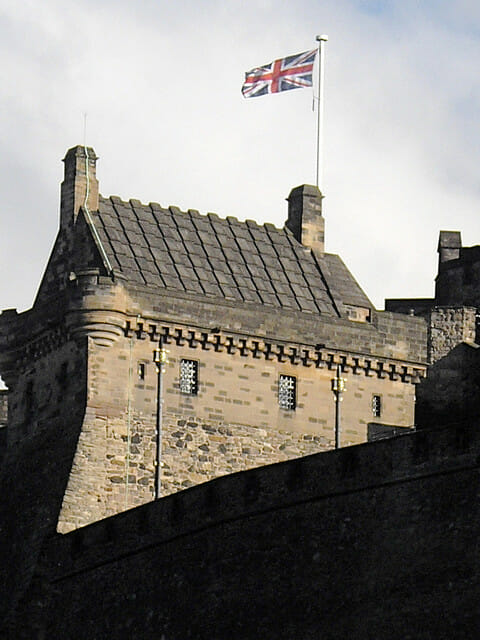What “Yes” in Scotland Might Have Meant

Looking at a map of the world and seeing the number of places over which the sun of the British Empire has most definitely set, it’s difficult to imagine why, when Scotland was presented with the opportunity to leave the United Kingdom, they did not take it. It goes against the grain of all we think we know about the place, from rugged individualistic men in kilts to Mel Gibson’s woad-streaked face shouting for freedom.
Given the other key points pressed hard by the Yes campaign—saving the National Health Service, eliminating the expensive Trident nuclear submarine system that sits offshore less than forty miles from Scotland’s largest city—the result of 55 percent “No” to 45 percent “Yes” in answer to the single referendum question, “Should Scotland be an independent country?” seems very odd indeed.
It has long been noted that Scotland is a land of huge inequality, from Highland estates tens or hundreds of thousands of acres in size (50 percent of the land in the country is held by fewer than 500 people) to the “schemes” or council estates of the gritty Central Belt. The effects of deprivation are reflected in the average life expectancy of a man in Glasgow city: a mere seventy-two (compared to eighty-five in the most privileged areas). It’s hard not to imagine in the crude value-for-money terms that increasingly define the privatization of public services in Britain, that in the Ponzi scheme that serves as Britain’s state pension arrangements, the swiftly dispatched Weegie male is a net asset to the nation.
The vote was expected to fall largely along lines of class and income, or solidarity with these (which in the late days of the campaign, when it looked like Yes was within touching distance of a win, was not to be discounted). A direct relationship emerged as the regions reported their polling results: the more affluent the area the greater the No vote; the more deprived the area, the greater the Yes vote. Even so, if the two most deprived cities in Scotland—Glasgow and Dundee—had carried higher Yes counts, they would have won over the rest of the country. But registration of voters, and then getting those voters to the polls, was always going to prove a challenge in places scarred by memories of Margaret Thatcher’s poll tax.
No exit polls were organized by the media, but Lord Ashcroft’s polling after the vote gave a revealing breakdown. Yes won every age group apart from a slight majority of eighteen-to-twenty-four year olds, and a vast majority of the over-fifty-fives. Scotland’s population, which loses many young people every year to better economic opportunities in England or abroad, is rapidly aging. The concerns of the pound, the pensions, and the public purse seemed to motivate the older voters not to change horses midstream, but what they failed to recognize is the need to keep young people, and perhaps encourage migrants, to guarantee the very wealth they voted No in an attempt to preserve.
To the relief of Deutsche Bank, Paul Krugman, and presumably Westminster, the Aye’s did not have it in the end. An onslaught of warnings from supermarkets and banks, some leaked before shareholders were even aware, were deployed to keep the growing Yes voters in line. The leaders of the Conservatives, Labour, and Liberal Democrats sprinted north in a last-ditch attempt to “save Britain” (a nonsense as Britain is the island, presumably independent Scotland would not have sawn itself off). They got their wish; Scotland is still part of United Kingdom, Plc. Yet this was still success for the Yes campaign that had been largely ignored by the establishment and was not supported by the media or any of the three largest UK-wide parties and, until recently, was predicted to lose by at least a twenty-point spread.
Of course, astute watchers of UK politics will know the actual difference in any of the three main parties’ policies is minimal, with anti-EU, Libertarian-lite upstarts UKIP pushing the national agenda more steadily right and the three main parties happy to go along for the ride. Turnout for recent elections seems to be dropping off as voters realize the only real difference in Westminster parties is in the color of their ties on election day. Tory true blue, Labour red, or canary Lib Dem yellow. Give the electorate something concrete to go for, the referendum seemed to suggest, and people will turn out in droves, with unpredictable results. That fact alone probably had some blood running cold in London last week.
Genuine criticism can be leveled, and questions asked, about whether a Holyrood-based independent Scotland run by the Scottish National Party would not also have been beholden to the party politics seen in the wider UK. Or whether the White Paper, a 600-plus-page document outlining the SNP’s public policy in the event of secession, would have survived intact. There was certainly potential for voters to eventually be as disappointed with Yes as with No, and find that the new boss was indeed much the same as the old boss.
For young people newly engaged in politics after decades of falling turnouts, the sixteen- and seventeen-year-olds who went to the polls for the first time and overwhelmingly supported independence, there is the possibility of some kind of social justice movement that puts people before profits coming out of the ashes of the Yes campaign.
Right now it looks as if people are massing under the name “the 45”—eerily reminiscent of the 45ers rebellion of 1745-46, which culminated in the last stand of Bonnie Prince Charlie’s army at the Highlands farm of Culloden. A comparison that becomes even less fanciful given the sectarian crowds of pro-Union thugs that occupied George Square in Glasgow, shouting marching tunes and giving Nazi salutes, the day after the vote. Whether any kind of positive movement out of Yes survives to another referendum, or indeed another face off with British nationalists, remains to be seen.